24 novembre
ore 12.00-14.00
Aula Consiglio |
Luca Giomi
Active fludis: from liquid crystals to living systems
Colonies of motile microorganisms,
the cytoskeleton and its components, cells and tissues have much in
common with soft condensed matter systems (i.e. liquid crystals,
amphiphiles, colloids etc.), but also exhibit behaviors that do not
appear in inanimate matter and that are crucial for biological
functions.
These unique properties arise when the constituent particles are
active: they consume energy from internal and external sources and
dissipate it by moving through the medium they inhabit. In this talk I
will give a brief introduction to the notion of “active matter” and
present some recent results on the hydrodynamics of active nematics
suspensions in two dimensions. 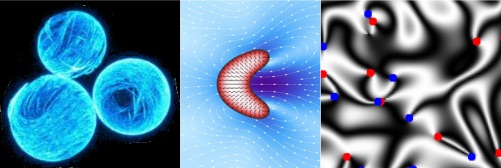 |
27
ottobre
ore 12.00-14.00
Aula Consiglio |
Barbara Mazzolai
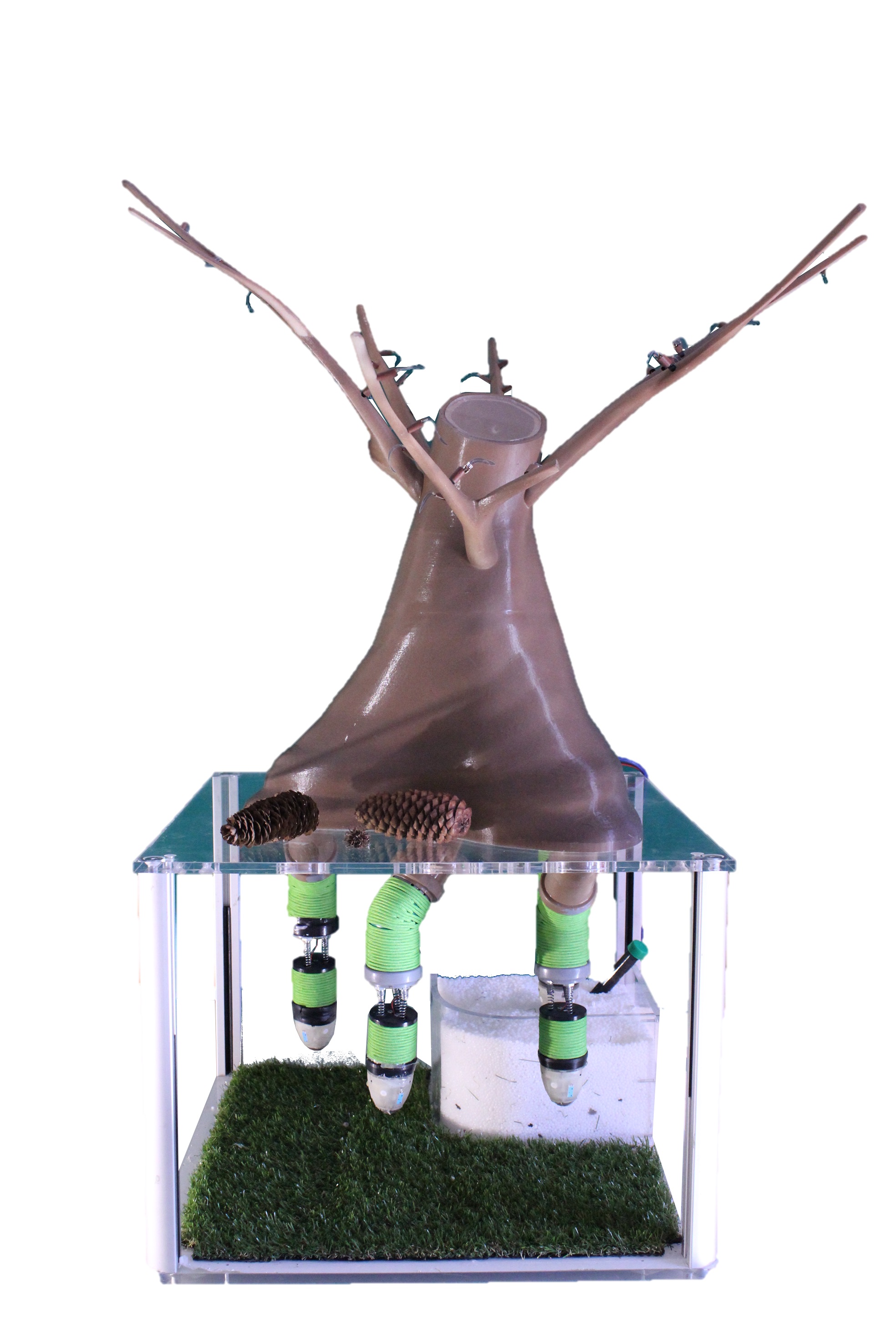
New frontiers in biology based robotics
Can Nature improve
technology? What is the link between living systems and robots?
giving way to a series of innovative robotic solutions assisting and
supporting today’s society. A bioinspired approach needs a deep
understanding of the selected biological models in order to extract the
key features relevantRobots today are expected to operate in a variety
of scenarios, being able to cope with uncertain situations and to react
quickly to changes in the environment. In this scenario a strong
relationship between Nature and technology plays a major role, with the
winning approach of evaluating natural systems to abstract principles
for new designs. Bioinspired soft robotics is a worldwide known
paradigm to develop new solutions for science and technology, for
designing robotic systems able to imitate the biological counterpart in
some specific functions. Such biological principles traditionally
originate from animal models for robots that can walk, swim, crawl, or
fly. Recently, engineers, material and computer scientists have also
increased their interest in plants, as a new model for developing
robots and ICT solutions. In this talk I will present some scientific
and technological challenges coming from both animals and plants. I
will compare ideas, biological features, and technological translations
coming from these two Kingdoms and related to areas of interest in
robotics: movement, sensing and control.
|
26
maggio
ore 12.00-14.00
Aula Consiglio |
Roberto Di Leonardo
The Physics and Engineering of Active Matter
Dense suspensions of
swimming bacteria display striking motions that look extremely vivid
when compared to the thermal agitation of colloidal particles of
comparable size. These suspensions belong to a wider class of
non-equilibrium systems that are now collectively referred to as active
matter. Research in active matter physics deals with the fundamental
aspects underlying some distinctive properties of these systems, such
as the emergence of collective behavior and rectification phenomena.
From a more engineering perspective, however, active matter can be
looked at as a special kind of fuel: a small droplet of an active fluid
can be used to propel micro-machines inside miniaturized chips, with no
need of external driving fields or control.
Using advanced tools for 3D optical imaging, manipulation and
fabrication we study complex phenomena in active matter with direct and
quantitative methods. I will review our recent work in this direction,
from off-equilibrium transport and stationary states in active matter
to the use of genetically engineered bacteria as controllable
propellers for synthetic micro-machines.  |
7
aprile
ore 12.00-14.00
Aula Consiglio |
Elena
Agliari
A few steps in artificial intelligence
Artificial
Intelligence (AI) has by now become pervasive in our every day life. In
this seminar I will provide a very basic introduction to AI, reviewing
the underlying ideas and the main models. These are inspired by
advances in neuroscience and are based on the interpretation of
information processing and communication patterns in a nervous system.
I will especially focus
on models designed for accomplishing two special tasks, that is,
"learning" and "retrieval".
Briefly, the former is the ability to improve the performance through
experience, the latter is the ability to exploit the information
previously learnt. These smart capabilities emerge as collective
features of network models based on elementary units (i.e., suitably
stilyzed neurons), that interact each other in a dense, frustrated and
non-linear way.
Finally, I will introduce
the so-called deep learning algorithms, which is the subject of
frontier AI research nowadays: these algorithms use a cascade of many
layers of elementary units, whence they achieve by far better
perfomances in terms of accuracy and of manageable information
complexity. 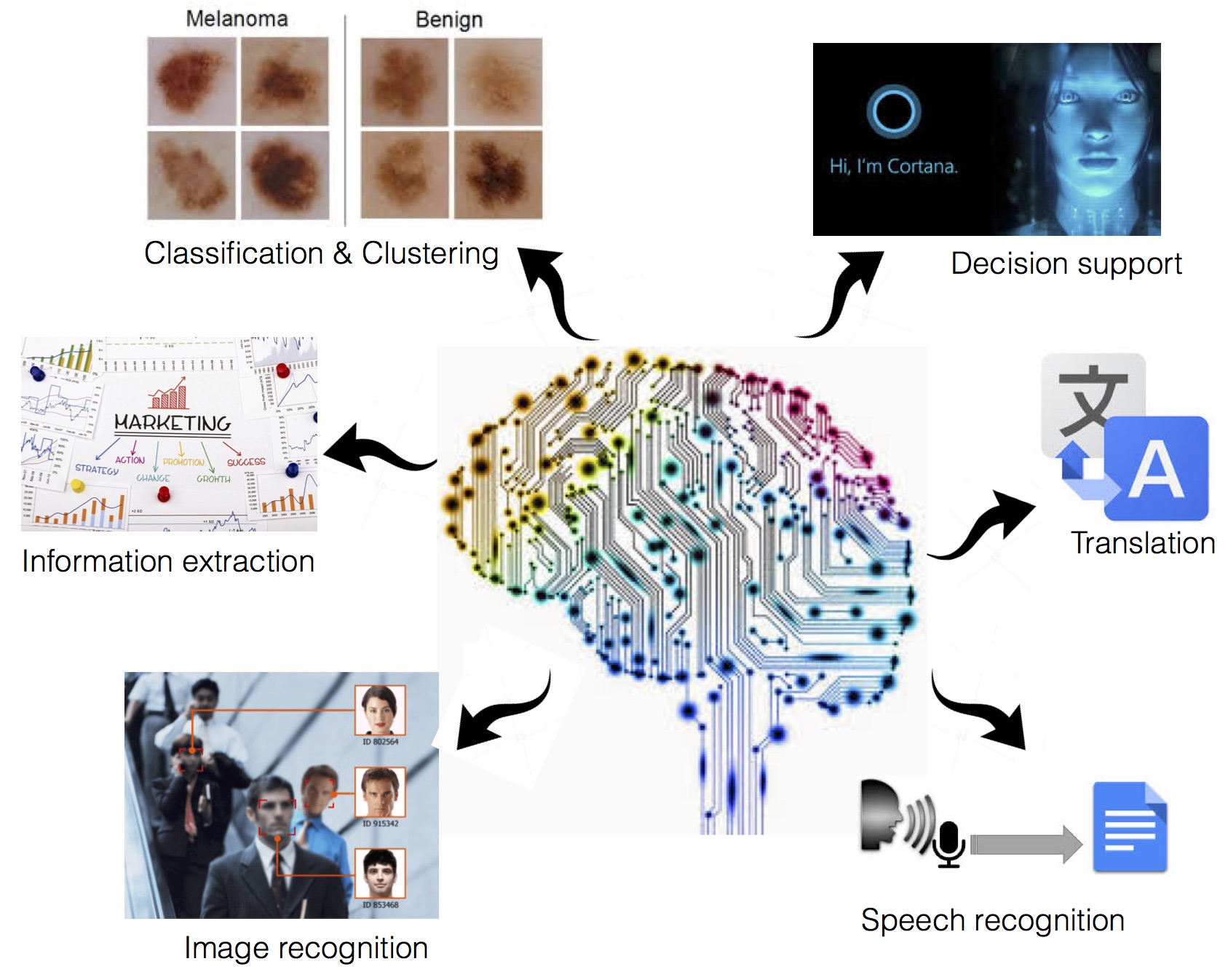 |
3
marzo
ore 12.00-14.00
Aula Consiglio |
Mariano
Bizzarri
Cell fate specification: global vs local control
rules, i.e., instructive vs permissive models
The process of lineage
specification is fundamental to the development and maintenance of
tissues in multicellular organisms. An unsolved question is whether
molecular cues such as growth factors actively push multipotent
progenitors to commit to a particular lineage according to the
so-called ‘instructive’ model. The opposite view posits that molecular
cues simply support the survival and proliferation of cells that have
already committed to a specific lineage by cell intrinsic agency or by
environmental physical cues, in agreement with the
‘selective/permissive’ model. Ectopic-expression experiments have
supported the instructive capacity of specific cytokines, even if a
number of artifacts biased these models. Indeed, exposure to growth
factors may have only an ‘enabling’ rather than an inductive role
during cell fate specification. For instance, in microgravity
conditions spontaneous, phenotypic determination occurs independently
from any biochemical ‘signal’ that could act as ‘instructive’ cue,
while the 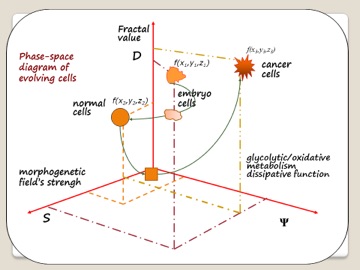 promoting
cell fate transition occurs once the gravity constraint has been ‘wiped
out’. Indeed, a cell population requires proper physical constraints to
be committed towards a specific differentiating pathway. In absence of
such physical cues, the intrinsic biological ‘variability’ cannot be
properly ‘selected and canalized’ into a specific phenotype. We
proposed an integrated model based on top-down causation processes
borrowed from microgravity-based experiments, were system’s global
factors show to be instrumental in shaping both morphology and function
of lower constituents. Interactions among different levels is likely to
occur according to nonlinear dynamics, involving biophysical and
molecular cues. Cell fate transition, in both normal and pathological
condition (as for cancer), may be framed according to the
non-equilibrium thermodynamics. In agreement with this paradigm, the
phenotypic determination may be represented by a Waddington’s
landscape, where both irreversible and irreversible transition can
happen. Within this perspective, cancer development can be viewed as a
phenotypic differentiation ‘gone awry’, but still ‘reversible’ when
different global constraints are modified. Yet, proper modelling as
well as mathematical analysis of such process still awaits a compelling
conceptualization.
|
27
gennaio
ore 12.00-14.00
Aula Consiglio |
Loredana Santo
Shape Memory Polymer Composites for Aerospace
Applications
Shape memory polymers and
their composites (SMPs and SMPCs) belong to a new class of smart
materials, which can have interesting
applications as expandable/deployable structures
and light actuators. In particular, SMPCs combine typical mechanical
and functional properties of composites with shape memory properties.
Such properties can be given to composite materials and structures by
using shape memory polymer (SMP) matrices or integratingShape memory
polymers and their composites (SMPs and SMPCs) belong to a new class of
smart materials, which parts made of SMPs. In the case of integration,
SMPC laminate can be obtained by adding a shape memory layer in form of
powder between the two composite skins or flexible composite skins can
be applied over a shape memory foam core obtaining composite sandwich.
As shape memory materials, SMPCs can respond to specific external
stimulus changing their configuration and then remember the original
shape. 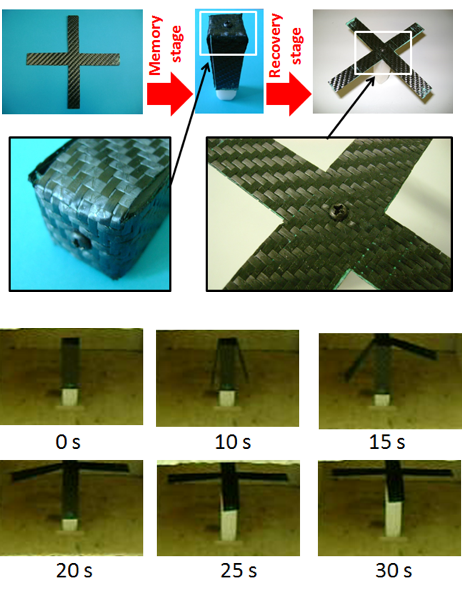
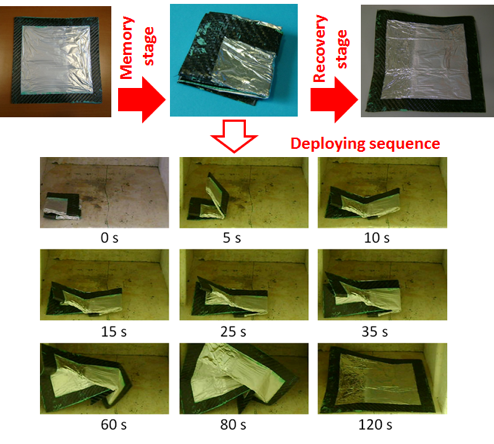
|
|